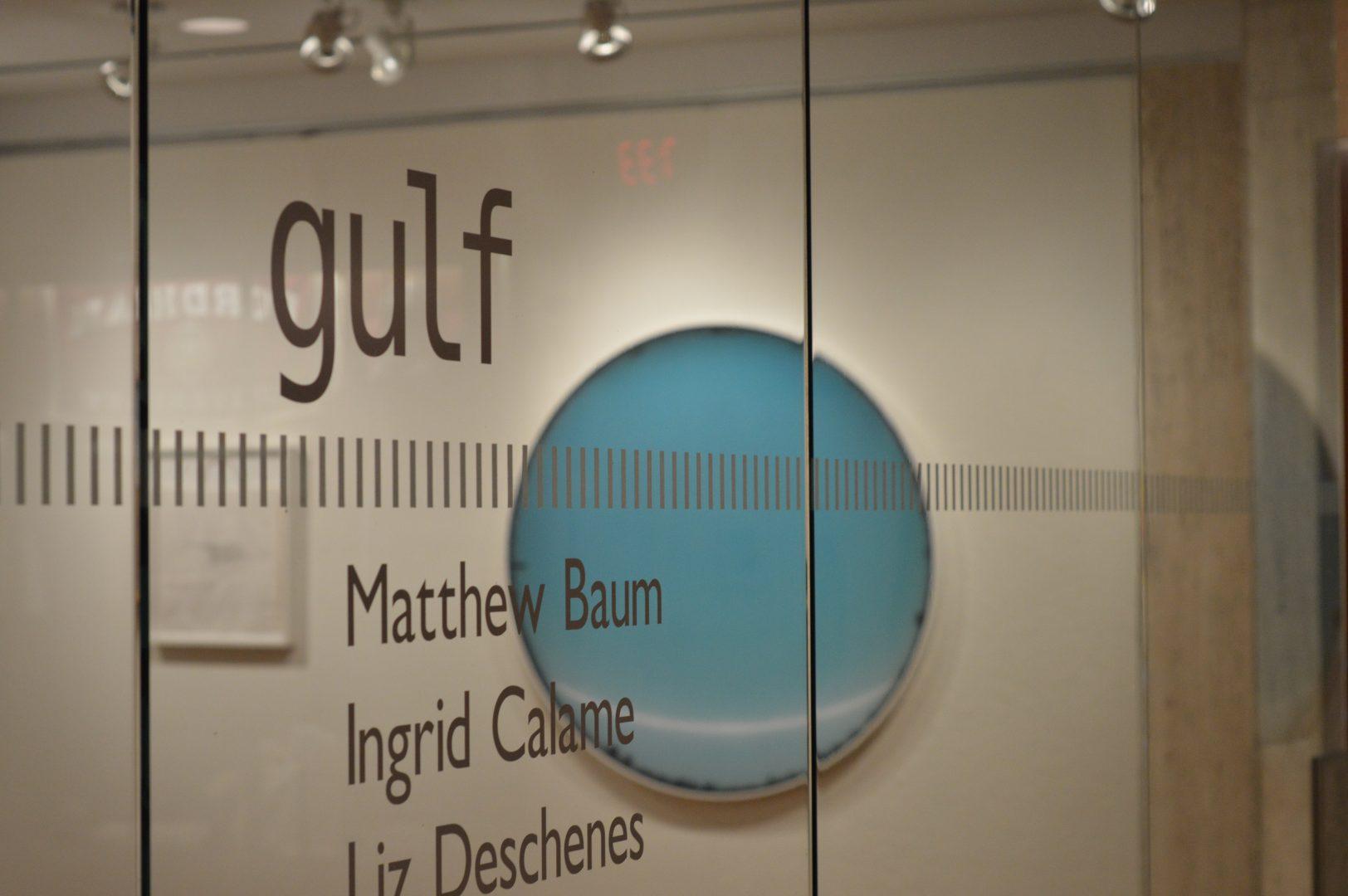Exploring the GULF at Fordham’s Center Gallery
September 9, 2013

When walking into an art exhibit, it can often be difficult to see a connection between very different pieces of art. Professor Casey Ruble, Artist in Residence at Fordham College at Lincoln Center (FCLC), explained to the Observer the process and the idea behind the new exhibit at the Center Gallery of FCLC, GULF, of which she is the idealizer and curator. GULF is about a concept of art that wants to go beyond its traditional meaning; it is in fact about the “expansiveness” of art in personal and global scenarios.
Harboring the idea of making an exhibit on this concept, Ruble has finally acquired works from emerging and established artists that represent expansiveness in different visual ways. “When I chose the title ‘GULF’ I was thinking about another type of gulf” Ruble said, “the concept of a ‘gulf’ perfectly encapsulates the idea of vastness that the exhibit wants to convey.” This concept of vastness is what Ruble has been stressing all along in the course she currently teaches at FCLC, “Visual Thinking.” “I really want students to understand what art is and what art can be,” Ruble said. “I want them to experience the art of expansiveness.”
The idea behind this new concept of GULF is indeed very “expansive”— yet, the magic of this exhibit is its success in putting this abstract concept into a clear visual perspective for the viewer. Ruble’s favorite piece of the nine that compose GULF is an offset-printed paper bag by Dan Graham—the original is held at the Museum of Modern Art (MOMA)—a piece that reflects the main concept of the exhibit. On the paper, Graham wrote in a decreasing order the numerical distances from the ‘miles to the edge of the known universe’ to his own cornea. “This piece shows expansiveness in a sense of space and the individual’s perspective” Ruble said.
Another piece, which, at first sight, looks like a white canvas, there is a whole world of imagery; Liz Deschenes’ “Untitled” is in fact not a blank painting, but an actual picture. Deschenes is an established photographer known for exploring the mechanics of photography. “Untitled” is part of a series of photograms (photographs created without the use of a camera) in which Deschenes exposed photographic paper to day and night time skies, creating varied surfaces. “With the changing humidity and light of the gallery, the print should start changing its shadows and appearance” Ruble said. The piece is therefore illusory in a sense, reflecting “the ongoing progression of time” Ruble said. “This piece is key to the idea of vastness of art because it explores ‘the limitless possibility of imagery.’”
GULF’s themes of vastness and expansiveness in art don’t only stress the individual’s own expansive imagination, but also stresses the challenge that artists take into representing the social and political issues through different works of art. The works of the Brazilian artist Adriana Varejão and the Americans Ingrid Calame and Matthew Baum are central to this topic.
Varejão’s “Contingente” is a picture of a red line, indicated as “equador’ –the Portuguese for ‘equator’— crossing a hand on a green surface. “The color red also stands for the violence of colonialism and oppression that those countries have suffered,” Ruble said, stressing the “transgression of boundaries” that Varejão conveys through her art in general. “Contingente” is extremely powerful in its simplicity because it represents “the relationship between the body and its social, political and geographic context” as Ruble defines it in the exhibit’s catalogue.
Ingrid Calame’s painting goes beyond the saying “never judge a book by its cover.” Calame’s work hides two very different parts of the world; the lines present on “#234 Drawing” are actual tracings of the streets across the Los Angeles River, placed on the ones of the floor of the Clark Telescope Dome of Arizona. The spaces between the overlapping lines are filled by different colors by the artist, creating an almost geometric effect. “This piece represents the vastness that there is between the high and low,” Ruble said, “from the look of the stars to the side walk on the L.A. River, this piece bridges the gap between infinite and infinitesimal” the professor said.
Matthew Baum’s piece is the one that completes Ruble’s exploration of infinity for GULF. Looking at the sequence of three panoramic photographs on the wall, one would never think that they are pictorial representations of the actual Trail of Tears, the infamous exodus that native Americans were forced to endure as a consequence of the Indian Removal Act of 1830,which expelled many Indians tribes from their homelands in the American South. “There is no apparent detail that this was the Trail of Tears” Ruble said, explaining the ‘expansiveness’ of this picture. Indeed, all that the observer can recognize in the picture is a rice field and the photographer’s shadows while taking the picture. “The work emphasizes the vast space between past and present” Ruble said on the ‘gulf’ that this piece explores.
GULF is an engaging and successful representation of the search for a concrete understanding of the abstract idea of vastness, using art to do so. The exhibit is currently in the Center Gallery, in front of the escalator to the Lowenstein Plaza, where it will remain until September 19. Join Professor Ruble and some of the artists, including Baum, at GULF’s reception on Sept. 4 from 6 to 8 P.M. to discover more about the other parts of the exhibit.








